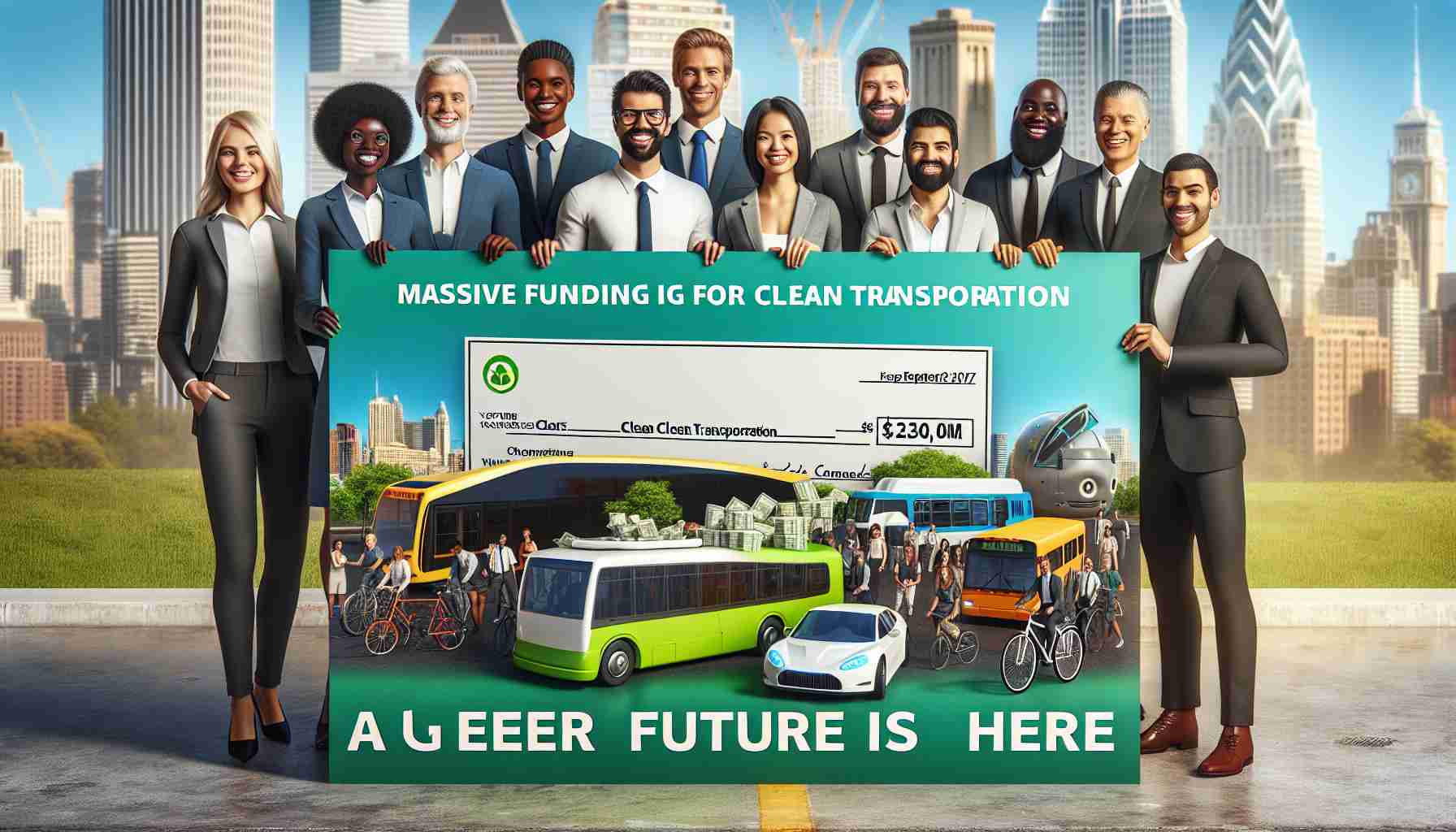Revolutionizing Clean Energy Infrastructure
The U.S. Department of Transportation is making a significant investment into the future of transportation, distributing $635 million in grants aimed at expanding electric vehicle (EV) and hydrogen refueling infrastructure across the nation. This funding, derived from the Bipartisan Infrastructure Law, will support a remarkable 49 projects in 27 states, four Tribes, and Washington, D.C.
One of the standout features of this initiative is the goal to install over 11,500 new EV charging ports and alternative refueling stations in key locations. This expansion is crucial for promoting the adoption of zero-emission vehicles, particularly heavy-duty trucks, by introducing advanced hydrogen stations designed for their specific needs.
A notable project includes a $24.8 million hydrogen fueling station facilitated by the Port Authority of Houston. This facility will be fully accessible to the public and is specifically engineered to accommodate high-demand fueling requirements. Additionally, a $55.9 million grant from the California Energy Commission is set to enhance zero-emission options by funding 21 public EV charging stations along with a hydrogen station geared towards medium- and heavy-duty trucks.
The overarching aim of this initiative extends beyond mere infrastructure. It aspires to stimulate job creation, promote equitable access to transportation alternatives, and foster innovation in the clean energy sector, aligning with broader national decarbonization goals. As these projects unfold, they represent a decisive step towards a sustainable transportation future.
Implications of a Cleaner Transportation Future
The investment in clean energy infrastructure represents not just a shift towards greener vehicles, but also a pivotal transformation in societal values and expectations regarding energy consumption. As electric vehicles (EVs) and hydrogen refueling stations become more accessible, consumer behavior is likely to evolve, accelerating the demand for sustainable living practices. This burgeoning infrastructure could catalyze a collective cultural shift toward environmental stewardship, particularly among younger generations who prioritize sustainability.
Economically, the infusion of $635 million into diverse communities lays the groundwork for a thriving clean energy sector. By creating thousands of jobs associated with construction, maintenance, and operation of these facilities, the initiative helps bridge economic disparities. The focus on nationwide coverage—especially in underserved areas—could also democratize energy access, fostering inclusivity that aligns with modern values.
Environmentally, the removal of traditional fueling infrastructure in favor of clean alternatives holds promise for significant reductions in greenhouse gas emissions. As these projects gain traction, they could eventually lead to a substantial decrease in air pollution, particularly in urban centers burdened by vehicle emissions.
Looking ahead, future trends could see an accelerating shift towards renewable energy sources for powering these stations, amplifying the positive environmental impacts. The long-term significance of this initiative may not solely be measured in emissions reduced but also in establishing a resilient, sustainable economy that prioritizes innovative technologies and ecological conservation. By reimagining our transportation infrastructure, we are not merely changing the way we move; we are redefining our relationship with the environment and our responsibility towards the planet.
Transforming the Future of Transportation: A Deep Dive into the U.S. Clean Energy Grants
Introduction
The recent commitment from the U.S. Department of Transportation to invest $635 million in clean energy infrastructure marks a pivotal moment in the transition to sustainable transportation. Through the Bipartisan Infrastructure Law, this funding aims to establish a robust framework for electric vehicle (EV) and hydrogen refueling stations nationwide, which is essential for driving the adoption of zero-emission vehicles.
Key Features of the Initiative
Expansion of Charging Infrastructure
The initiative aims to install over 11,500 new EV charging ports and alternative refueling stations. This network is designed to support not only passenger vehicles but particularly the growing market of heavy-duty trucks, which includes advanced hydrogen refueling stations tailored for their specific fueling demands.
Notable Projects and Their Impact
1. Port Authority of Houston Hydrogen Station:
– Investment: $24.8 million
– Significance: This facility will be publicly accessible and engineered for high-demand fueling, providing essential support for hydrogen-powered vehicles.
2. California Energy Commission Projects:
– Investment: $55.9 million
– Features: Funding will enhance the capabilities of 21 public EV charging stations alongside a hydrogen station specifically for medium- and heavy-duty trucks.
Advantages of the Initiative
Economic and Environmental Benefits
The expansion of clean energy infrastructure not only promotes the adoption of zero-emission vehicles but also aims to create jobs within the community. By prioritizing equitable access, the initiative seeks to ensure that all communities can benefit from the transition to clean transportation. Additionally, these projects align closely with national decarbonization goals, thereby contributing to climate change mitigation efforts.
Challenges and Limitations
While the investment marks a significant step forward, challenges remain. These include:
– Infrastructure Integration: Ensuring that new stations are effectively integrated into existing transportation networks.
– Public Adoption: Encouraging public acceptance and usage of hydrogen and EV charging stations.
– Maintenance and Sustainability: Developing a sustainable model for maintenance and operation long-term.
Future Predictions and Innovations
Looking ahead, the expansion of clean energy infrastructure is expected to evolve with advancements in technology. Innovations in battery technology, grid integration, and renewable energy sources will play crucial roles in enhancing the efficiency of charging systems. Furthermore, the trend towards increased collaboration between government entities and private companies is likely to accelerate infrastructure development.
Conclusion
The $635 million investment by the U.S. Department of Transportation represents a transformative approach to building a sustainable transportation future. By focusing on EV charging and hydrogen refueling stations, this initiative not only addresses current transportation challenges but also lays the groundwork for innovative practices in the clean energy sector.
For more information about transportation innovations and clean energy initiatives, visit Transportation.gov.













